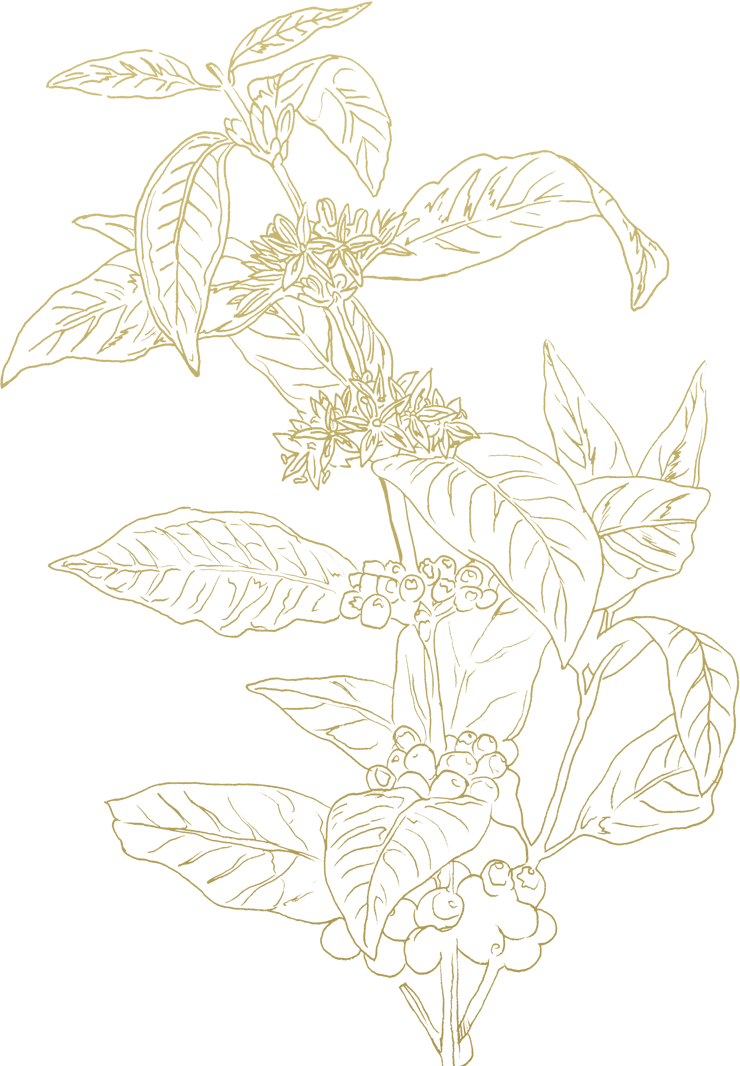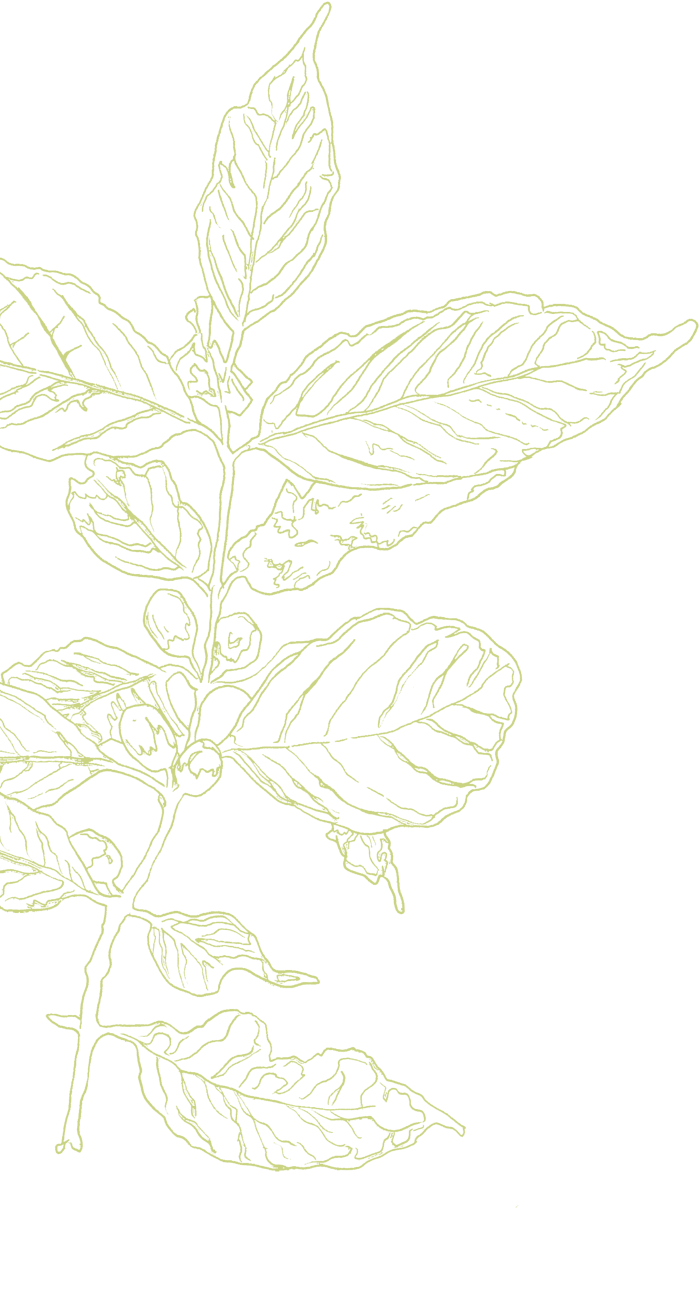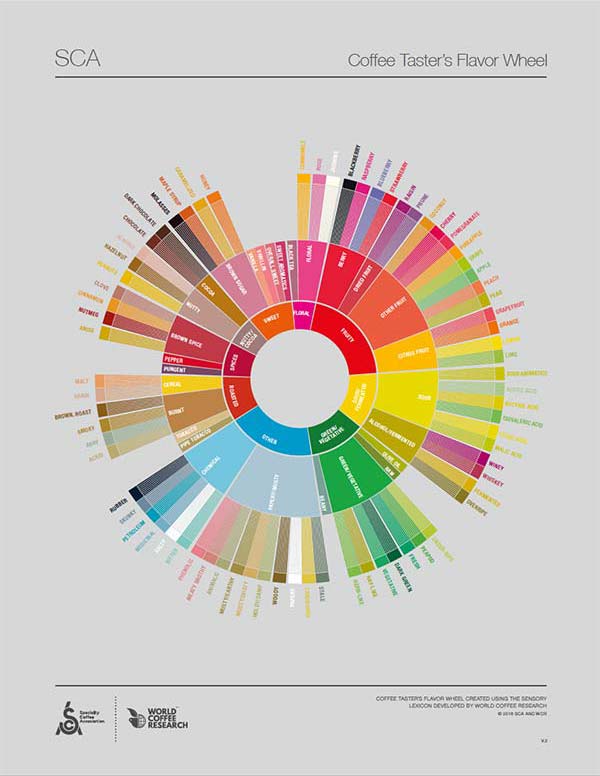Each bean has it’s own story to tell

Grow
A coffee bean is actually a seed. Coffee seeds are generally planted in large beds in shaded nurseries. The seedlings are watered frequently and shaded from bright sunlight until they are hearty enough to be permanently planted. Planting often takes place during the monsoons, so that the soil remains moist while the roots become firmly established.
Pick
The coffee plant starts bearing fruit after 3 – 5 years. In the month of February the coffee flowers blossom and by July clusters of green coffee cherry start appearing on the plants, which ripen to deep red cherries. These cherries are ready to be handpicked by expert workforces. The harvest season is from November to mid‑January for Arabica & February to mid‑March for Robusta.
PROCESS
Once picked the coffee reaches the pulping stations where is coffee are processed quickly to prevent spoilage. Processes could involve natural, washed, pulped natural depending on the coffees. The coffees are then sent to the curing works, where they are hulled, polished, peeled, graded, and sorted.
Roast
These processed beans are now known as ‘green coffee’ ready to be shipped to roasters. The roasters carefully roast the coffee to bring out the flavours and characteristic for this humble coffee beans, where the journey ends and you enjoy your cup of coffee.
Table of contents
ORDERING WITH US
How to order with us?
We cater for all sizes of Roastery. You can purchase from 1 tonne of coffee to an entire container (18 tonnes) or more. Simply reach out to us at info@sicc.coffee or call us and can provide you with all the details. India has annual crop harvest. The harvesting times are from November to mid-January for Arabica and February to mid-March for Robusta. We will not always have every varietal in stock but with some planning we can ensure you get the coffees you need.
How do I choose which coffee to buy?
Choosing coffees for your offering can be a daunting task especially when if you are new to the industry. Understanding what you want from a coffee is the most important thing. Once you know this we can help you narrow down the options to achieve the flavours you are looking for.
How can I order samples?
We can supply you with green or roasted samples of our coffees. Green samples are provided as 200gm and roasted samples are sent out in 100gm. You can order samples by emailing us at info@sicc.coffee. Our samples are free for UK and Europe. Rest of the world we charge postage fee.
Packaging
Most of our coffee is shipped on UK pallets. We can pack anywhere from a single bag up to 12 bags on a pallet. Any combination of bags can be put on a pallet so you can mix and match.
Shipping
We can arrange all the haulage to your door. You don’t have to worry about paperwork or any additional logistics. Just make sure you have space to store the coffee when it arrives! If you have specific requirements in terms of the kind of vehicle you can receive be sure to let us know. Please be aware that these requirements can increase the cost.You are welcome to organise your own haulage if you prefer.
Payments
Currently we take pre-payments on order. We can offer payment terms to customers once we have an established trading relationship. Please contact us to find out more about our payment Terms & Conditions.We can issue invoices and accept payment in GBP currently.
GENERAL FAQ
What is direct trade coffee?
Direct Trade coffee is when the roaster buys directly from the planter, to give maximum benefit to the plantation and planter.
How does our direct trade model work?
Sourcing directly from the coffee growers shortens the supply chain, meaning producers receive a higher price for their coffee. Not only is the price fair, but direct trade also allows farmers to be rewarded for superior quality, setting a benchmark in the region for exemplary coffee production. Without having to rely on certifications or conditions set by third parties, coffee buyers are able to meet and communicate directly with farmers to agree on a price.
With the term ‘Direct Trade’ being overused and abused, we have simplified this by taking you directly to the producer minus all the complications of exporting/importing. See us as a direct trade facilitator if you will.
What does environmentally friendly and shade grown coffee mean?
Our plantations are nestled in one of the world’s top 10 hottest biodiversity ‘hotspots’ in India the ‘Western and Eastern Ghats’. With over 7,402 species of flowering plants, 1,814 species of non-flowering plants, 139 mammal species, 508 bird species, 179 amphibian species, 6,000 insects species and 290 freshwater fish species; it is likely that many undiscovered species live in the Western & Eastern Ghats. At least 325 globally threatened species occur in the Western Ghats.
Coffee plants require about four hours of sun each day, and hence, all coffee in India is grown in the shade. The shade used in coffee plantations falls into two categories: an upper, permanent canopy and a lower, temporary canopy. Upper canopy shade consists primarily of original jungle trees (Silver Oak is a popular variety) that may tower 100 feet or more above ground level. The lower canopy is traditionally populated by Dadap (Eryhtrenia Lithosperma) trees, which are easily pruned to regulate the amount of sunshine and rain reaching the coffee plants.
The increasing variety of overhead shade trees provide a sanctuary for birds and enhance the quality of natural organic matter introduced to the soil from falling leaves. This decomposed organic matter enriches the soil, conserves moisture, and reduces the need for chemical fertilizers. Shade trees also control the growth of weeds on the estates and reduce the incidence of insects, pests, and leaf disease.
Know more about indian coffee
India is the sixth largest producer of coffee in the world, accounting for over four percent of global coffee production. Although India was one of the earliest growers of Arabica, it now produces a higher percentage of Robusta. Almost all Indian coffee is shade grown, and frequently intercropped with pepper, cardamom, cinnamon, orange, jackfruit etc.
Know Indian speciality coffee
- Mysore Nuggets EB (Specialty Coffee)
- Monsooned Malabar AA
- Monsooned Malabar Arabica A
- Robusta Kaapi Royale
- Monsooned Robusta AA
- Monsooned Malabar Robusta AA
Coffee tasters wheel of flavours
GREEN COFFEE PROCESSES
Dry/natural processed coffee
The natural/dry method is the age-old method of processing coffee, and still used in many countries where water resources are limited. The freshly picked cherries are simply spread out on huge surfaces to dry in the sun. In order to prevent the cherries from spoiling, they are raked and turned throughout the day, then covered at night or during rain to prevent them from getting wet.
Depending on the weather, this process might continue for several weeks for each batch of coffee until the moisture content of the cherries drops to 11%. Naturals tend to have more fruit and fermented flavors because the bean has more time to interact with the natural sugars from the cherry as enzymes break down the mucilage around the bean.
Semi-washed/pulped natural/honey processed coffee
The Honey/pulped natural is a process where the skin is removed from the coffee cherry. This leaves the fruity mucilage still intact during the drying process. Mucilage is the thick, gelatinous substance produced by all plants. So basically the coffee is dried with this sticky fruit pulp still attached.
Wet/washed process coffee
Wet/washed process removes the pulp from the coffee cherry after harvesting so the bean is dried with only the parchment skin left on. First, the freshly harvested cherries are passed through a pulping machine to separate the skin and pulp from the bean.
The beans are separated by weight as they pass through water channels. The lighter beans float to the top, while the heavier ripe beans sink to the bottom. They are passed through a series of rotating drums which separate them by size.
Once seperated, the beans are transported to large, water-filled fermentation tanks. Depending on a combination of factors – such as the condition of the beans, the climate and the altitude – they will remain in these tanks for anywhere from 12 to 48 hours to remove the slick layer of mucilage (called the parenchyma) that is still attached to the parchment. While resting in the tanks, naturally occurring enzymes will cause this layer to dissolve.
When fermentation is complete, the beans feel rough to the touch. The beans are rinsed by going through additional water channels, and the dried.
Still have a question? Get in touch with our team at info@sicc.coffee


